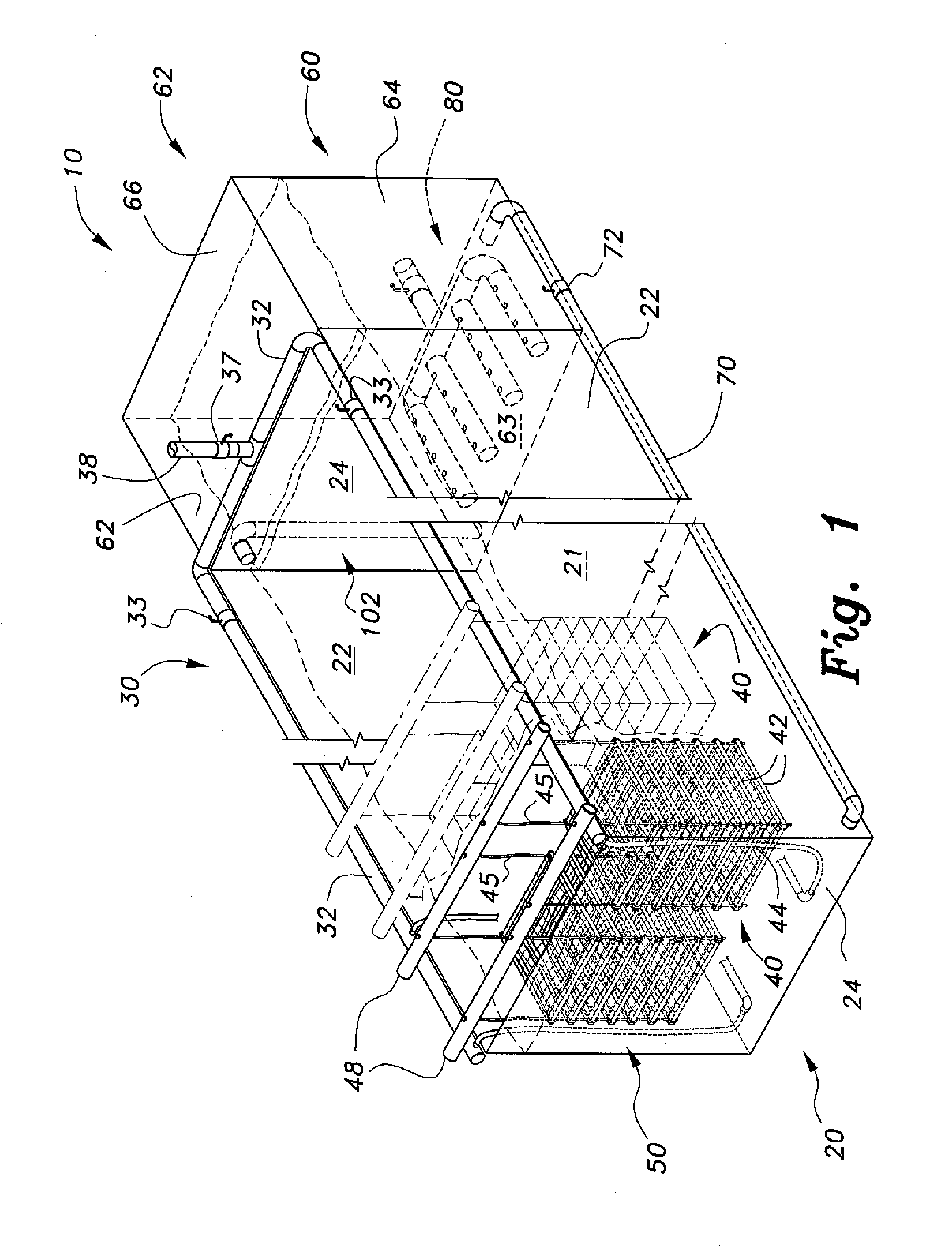Shrimp culturing system
a technology of shrimp culturing and shrimp, which is applied in pisciculture, aquaria, climate change adaptation, etc., can solve the problems of affecting the general affecting the availability of shrimp for consumers, and being easy to m
- Summary
- Abstract
- Description
- Claims
- Application Information
AI Technical Summary
Benefits of technology
Problems solved by technology
Method used
Image
Examples
Embodiment Construction
[0017]The shrimp culturing system, generally referred to by the reference number 10 in the drawings, provides a protective environment and an artificial habitat with maximal surface area for shrimp to grow and thrive. The shrimp culturing system 10 utilizes air to aerate the system and transfer the water from one location to another. The shrimp culturing system 10 includes a culture tank 20, a clarifier tank 62 extending from or associated with the culture tank 20, an auxiliary post-larval (PL) tank 110 stackable on top of the clarifier tank 62, and an air manifold 30 facilitating aeration and movement of the water throughout the shrimp culturing system 10.
[0018]As best seen in FIGS. 1-3, the culture tank 20 is desirably constructed as an elongate open container configured to house and raise shrimp. The culture tank 20 includes at least a pair of opposed elongated sides or sidewalls 22 and at least a pair of opposed short sides or sidewalls 24 connected to the opposite ends of the e...
PUM
 Login to View More
Login to View More Abstract
Description
Claims
Application Information
 Login to View More
Login to View More - R&D
- Intellectual Property
- Life Sciences
- Materials
- Tech Scout
- Unparalleled Data Quality
- Higher Quality Content
- 60% Fewer Hallucinations
Browse by: Latest US Patents, China's latest patents, Technical Efficacy Thesaurus, Application Domain, Technology Topic, Popular Technical Reports.
© 2025 PatSnap. All rights reserved.Legal|Privacy policy|Modern Slavery Act Transparency Statement|Sitemap|About US| Contact US: help@patsnap.com



